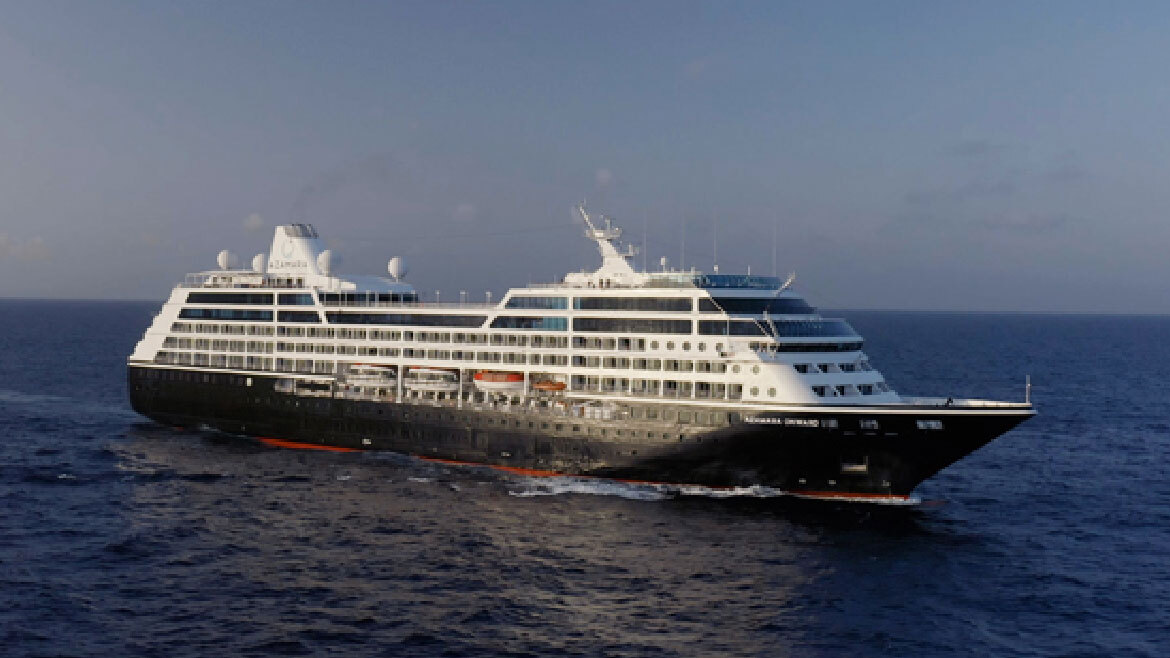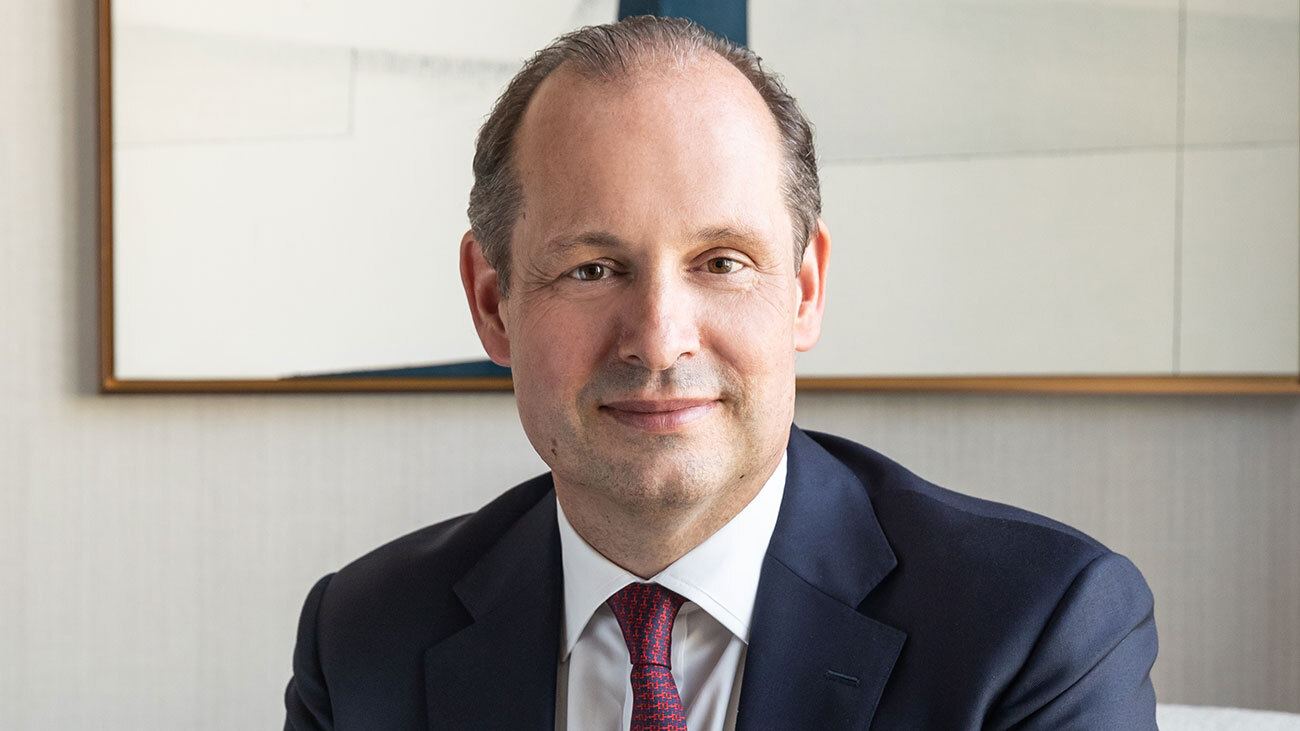Why it's time to head back to Sri Lanka
A sense of intrigue hangs in the air as we putter along the dusty dirt track. Details of tonight’s dining experience have been closely guarded, but if the past 24 hours are anything to go by – a decadent afternoon tea on the terrace, a signature massage in the spa – I know we’re in for a treat.
The late evening sun hangs low over the paddy field, while wild peacocks pick through the grassy fronds in search of grains of rice to steal. Our emerald-green tuk-tuk comes to a stop at a clearing and we’re led deeper into the field on foot by a group of Sri Lankan musicians, the sounds of their rhythmic drumbeats and hypnotic singing drifting on the breeze.
When all is revealed, we stand on a palm-forested island ringed by a narrow waterway. A pavilion strung with fairy lights presides over a candlelit dinner table, encircled by flaming torches. Smiling waiters stand poised with trays of arrack sours and freshly baked canapés. We while away the hours trading stories over a traditional Sri Lankan roti dinner – the country’s famous flatbread infused with sweet coconut and fiery chilli – while chefs and staff move in perfect harmony around us. As darkness falls, fireflies appear, tiny pinpricks in the moonlit sky.

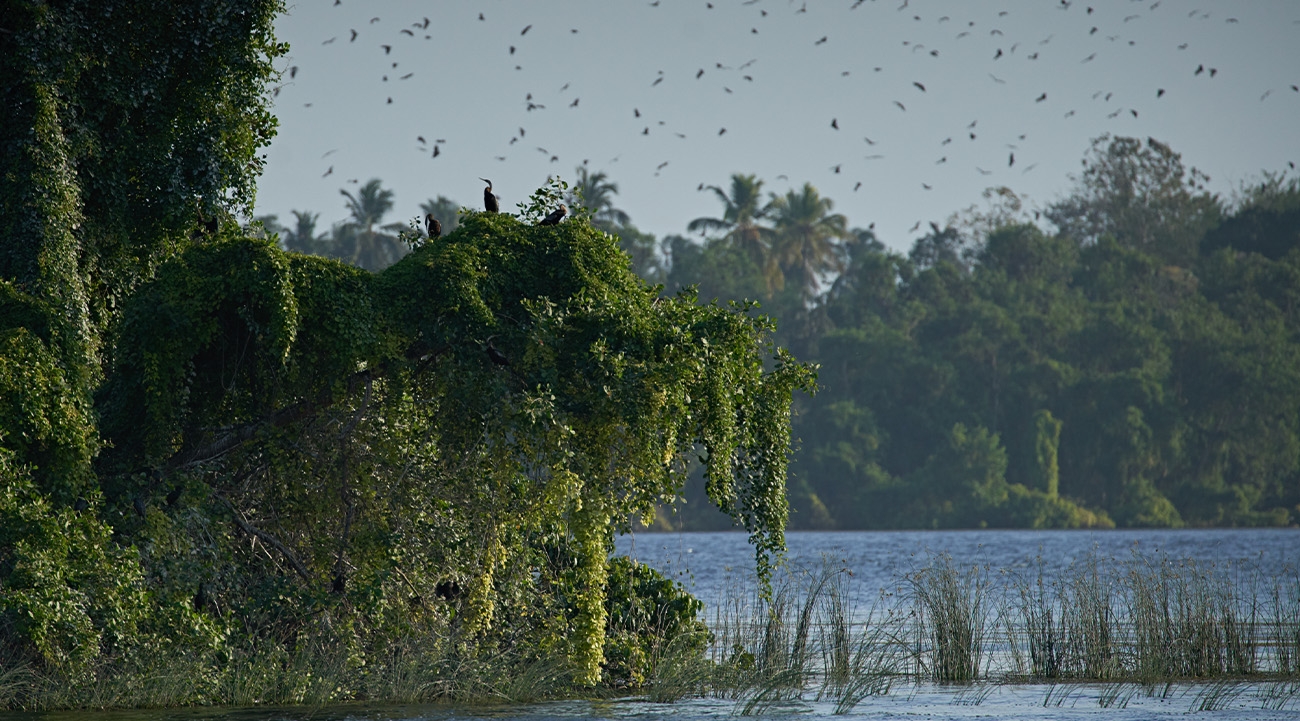

Heartfelt hospitality
I’d heard about Sri Lankan hospitality, but I wasn’t prepared for it to be quite so knockout. The warmth and generosity that shines from every staff member I meet is proof that there is no disaster too great to dull Sri Lanka’s shine. The island nation in the Indian Ocean has had more than its fair share of disasters and turmoil: a lengthy civil war that raged for more than 25 years; the 2004 Indian Ocean earthquake and tsunami, in which more than 30,000 Sri Lankans were killed; and the deadly 2019 Easter bombings.
Most recently, the country has been grappling with the after-effects of Covid-19, which struck as the country was on the brink of its best-ever year for tourism, and an ongoing economic crisis – its worst since gaining independence from Britain in 1948. But Sri Lanka’s comeback is well under way and, once again, it’s the unwavering resilience of its people driving it.
Though visitor numbers dropped to 700,000 in 2022 – a substantial decrease compared with the island’s best year in 2018, when 2.3 million travellers were drawn to its shores – Sri Lanka is on track to meet its target of 1.5 million visitors this year.
By 2029, it hopes to attract five million. Tourism executives are frank about the country’s recovery. At World Travel Market in November, the chairman of the Sri Lanka Tourism Promotion Bureau, Chalaka Gajabahu, said it would take “another year or two” for Sri Lanka’s economy to return to “normalcy”. But he stressed that there was “no problem at all” for travellers visiting the destination.
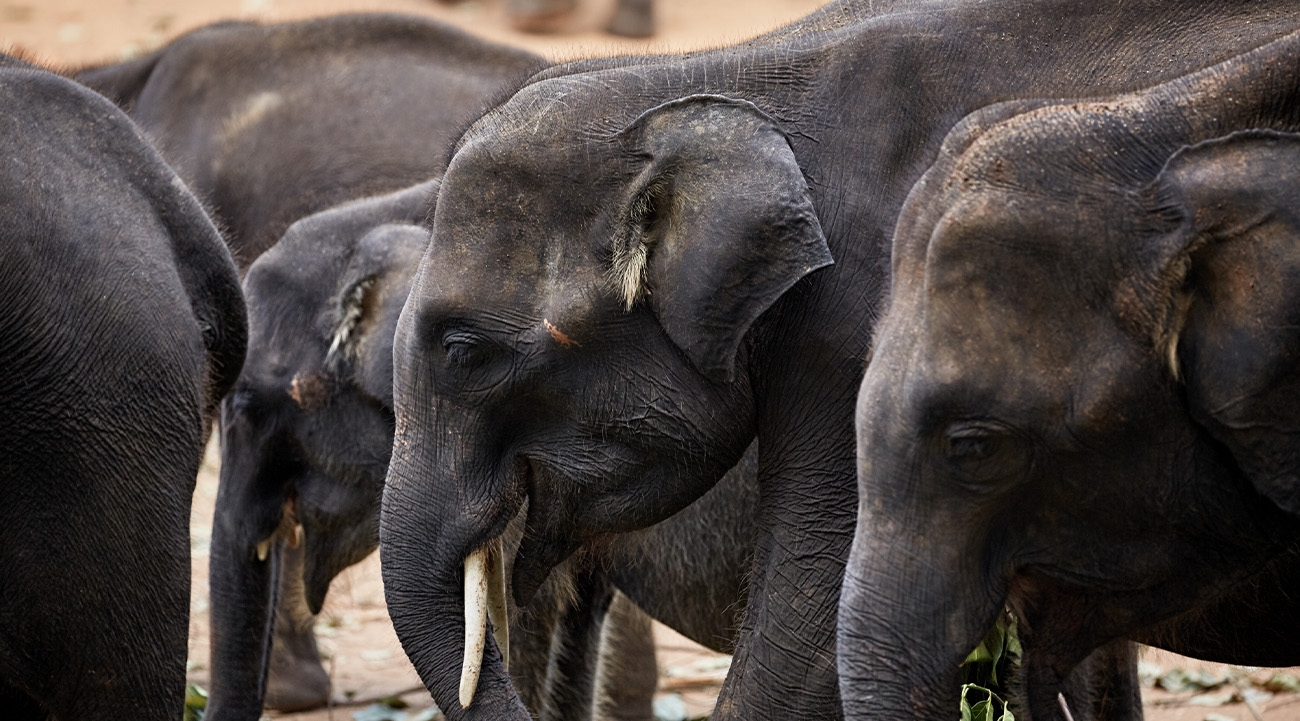

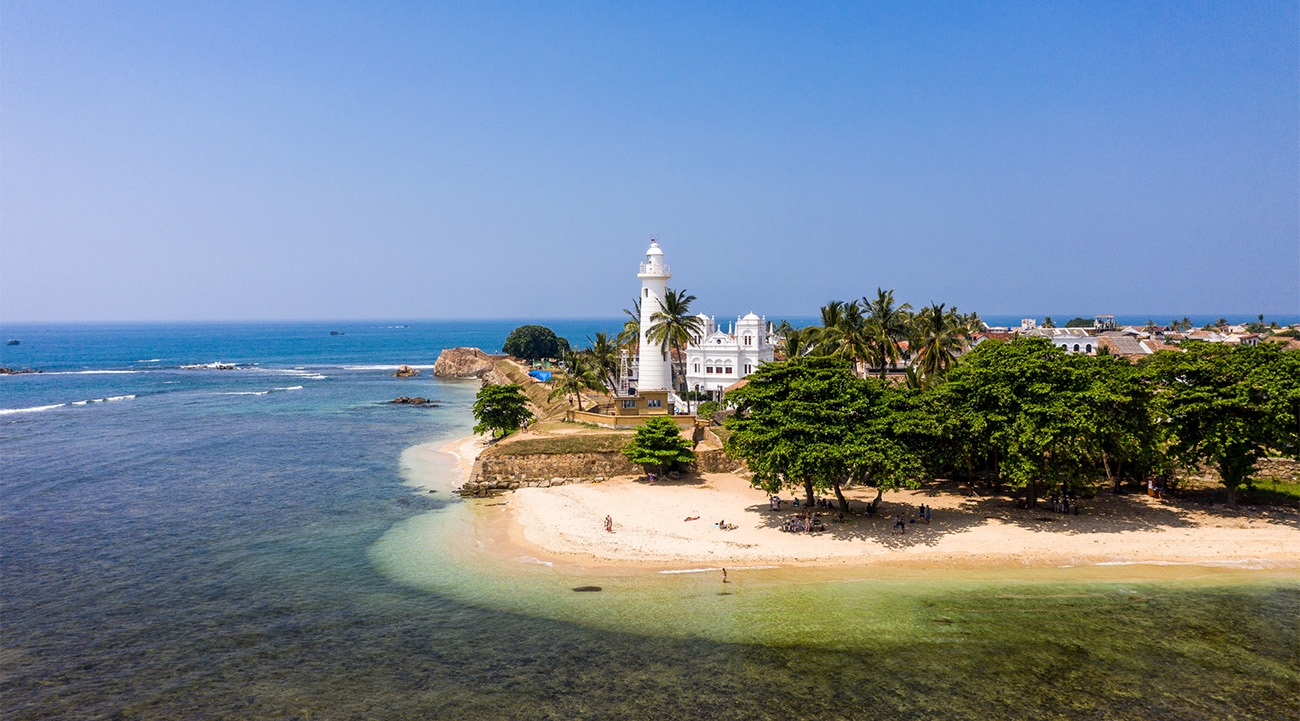
Southern sights
Our week-long sojourn along the island’s south coast is certainly proof of that. Sri Lanka bills itself as a country in miniature, with spectacular stretches of sun-drenched coastline, abundant national parks, ancient temples and tea plantations galore – and on the south coast, guests short on time can get a glimpse of it all. It’s also here that the majority of the island’s high-end product resides. Luxury hotel brand Aman has two calling cards in the destination, each with a distinct personality, creating a compelling twin-centre option for affluent clients.
Tucked within the ramparts of Sri Lanka’s 17th century Galle Fort – a Unesco World Heritage Site, no less – Amangalla commands attention as soon as you arrive. Built in 1684, this grand, high ceilinged property started life as the Dutch military headquarters, before later being bought by an Englishman who transformed it into the New Oriental Hotel, one of the first properties on the island. Aman acquired it in 1995 and quickly put its trademark stamp on proceedings, introducing personalised services like in suite check in and unique experiences, such as our magical evening in the paddy field.
A lot of life has passed through Galle. The harbour was the hub for all shipments in the 14th century, making it a second capital of sorts. The city was occupied by the Portuguese from 1505; the Dutch arrived in the 1640s, building the ramparts of the fort. The English took over in the 1790s. Spend a day wandering the circumference of the walls and marvel at the views – the steady waves of the Indian Ocean on one side, locals playing cards on terracotta balconies and the famous cricket ground on the other.
Visit the 14 bastions dotted around the ramparts, and shop for antiques and jewellery in the maze of lanes that sprout, serpentine like, from central Pedlar Street. The 50 mile journey from Amangalla to its balmy beachside sister, Amanwella, is a fitting opportunity to learn about two of Sri Lanka’s biggest exports: tea and cinnamon. We stop en route at Handunugoda Tea Estate in the hills above Koggala, known for its production of virgin white tea, which is harvested entirely without touching human hands. It’s thought to have the highest naturally occurring antioxidant content of any beverage – 10.11% – making it one of the world’s most expensive teas.
Sri Lanka also exports more than 80% of the world’s best-quality cinnamon, and masters of the trade are keen to preserve their traditions. Among butterflies and the calls of peacocks, we wander a small-scale plantation named The Cinnamon Experience on a secluded hillside in Habaraduwa, where guide Roshani shows us how to make cinnamon rolls by peeling the top layer off the bark, and points out the tell-tale signs between ‘true’ and ‘fake’ cinnamon (spoiler: the good stuff should have layers inside).
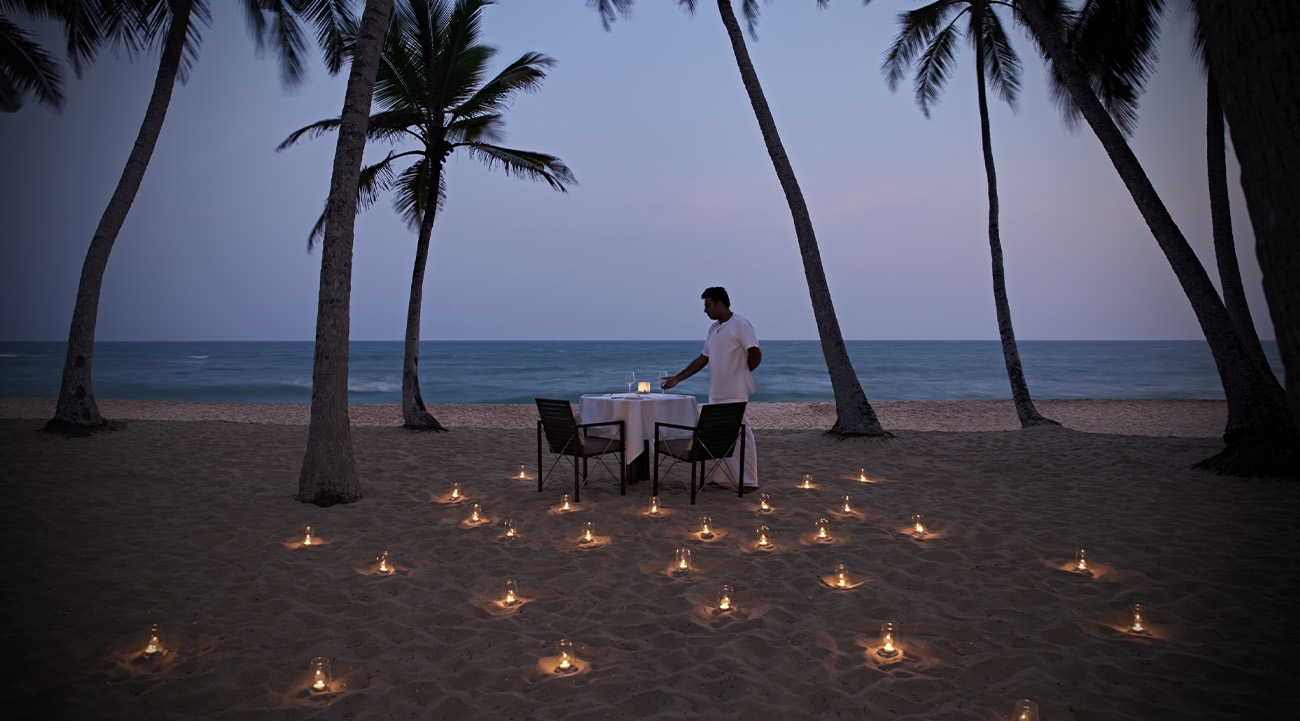
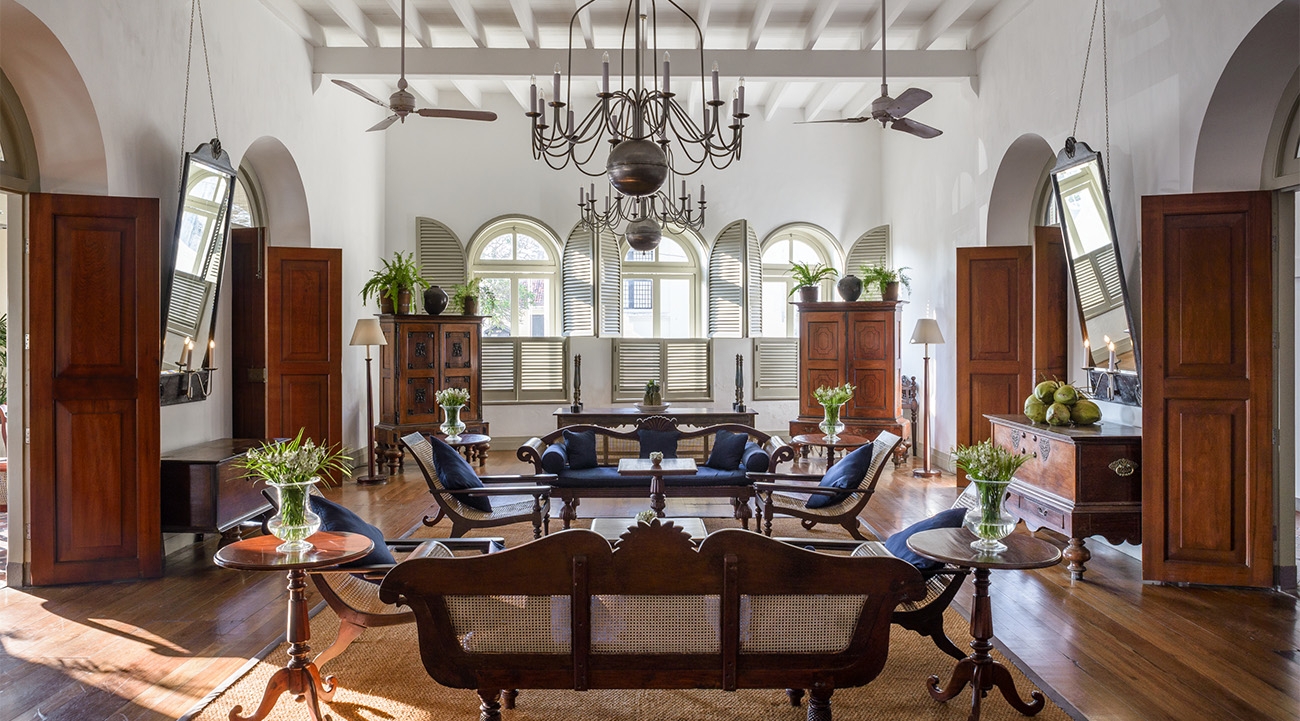
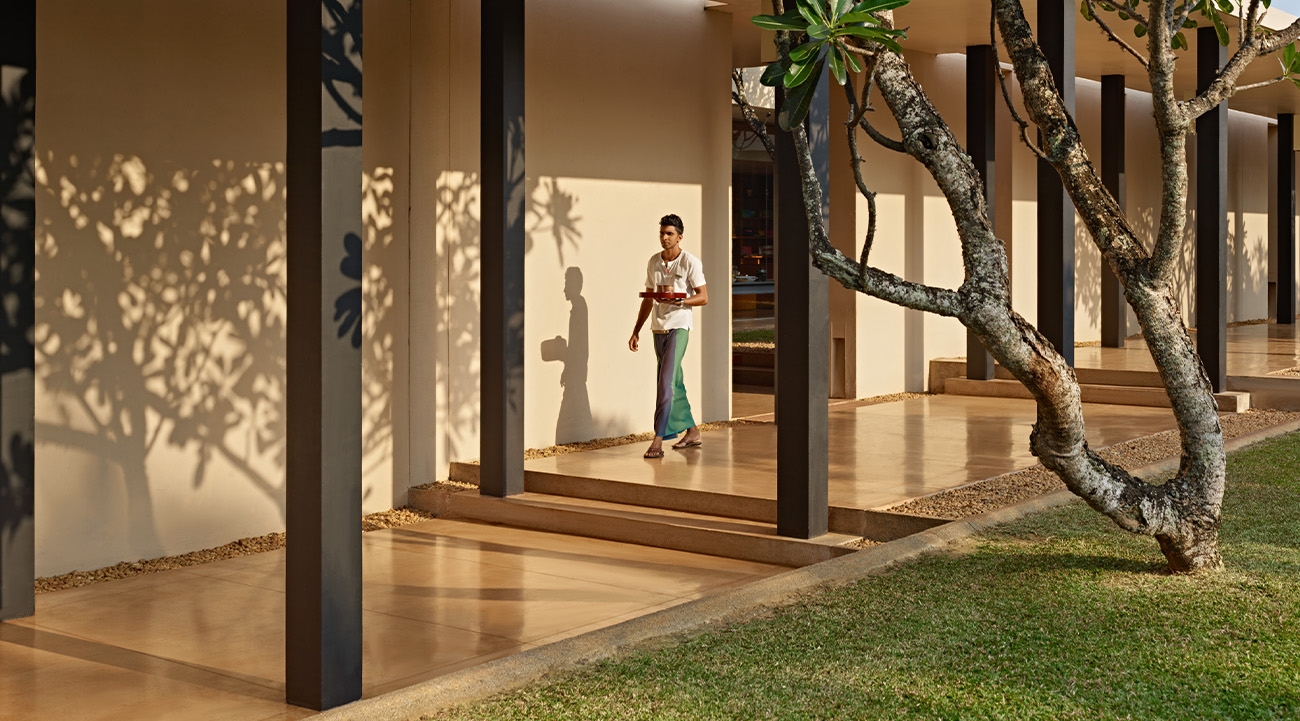
Beachside bliss
Arriving at Amanwella feels like coming home and discoveringutopia all at once. Located just outside the colourful fishing village ofTangalle, the property has all the trappings of the ultimate beachside escape:a scalloped stretch of coastline carpeted in soft, sugary sand; a sleekinfinity pool nestled amid a towering coconut grove; and individual villaslarger than my London flat.
It’s quite possible many guests simply come here and neverleave, but Amanwella is surrounded by treasures. Nearby jungle conceals ancientcaves and sacred sites, such as Mulkirigala Rock Temple, a spiritual monasticsite that sees guests clamber up 533 steps to its peak (best viewed at sunset).Two hours northeast of Tangalle is Yala National Park, where nearly 800 milesof wildlife reserve play host to a colourful clutch of flora and fauna, withwild Asian elephants and the elusive leopard leading the charge.
On our final evening, we head to Mawella Lagoon, a secludedspot just 10 minutes from Amanwella, and board what the hotel calls itsfloating lounge. There are cushions and canapés and free-flowing champagne aswe sail across the water, a carpet of lotus flowers around us, birdsong loud inthe trees. Seemingly out of nowhere, a flock of bats erupts from the mangroves,and suddenly there are hundreds of them swirling and squawking above us. Theterm surprise and delight is used a lot in luxury, but it’s undeniably evidenthere. Sri Lanka: it’s good to be back.
Hotel low-down
Amangalla: The stories of the past are felt stronglyat Amangalla. Furniture across the property is antique, with most of itbelonging to the former New Oriental Hotel, making it more than 100 years old.Tiling in parts dates back to the 1600s. Suites boast original wooden floors –creaks and all – alongside high sash windows and glorious four-poster beds.Modern creature comforts like the pool and spa have been thoughtfullyintroduced, with the former placed amid flowering frangipani trees, and thelatter, which boasts adjoining hydrotherapy facilities, tucked into a quietcorner in a white-washed building with a terracotta roof.
Amanwella: Famed Sri Lankan architect Geoffrey Bawais responsible for this property’s striking design, with its modernist linesand masterly harnessing of indigenous materials. Light-filled suites are havensof space and tranquillity, with floor-to-ceiling glass windows, hand-hewn stonewalls and terrazzo floors. Every accommodation boasts a sun-dappled courtyardwith a private plunge pool, and a sweeping terrace with palm-fringed views ofthe beach. Don’t miss a private yoga session, held in a coconut grove next to thesoothing sounds of the ocean, or an exclusive cooking class with executive chefShantha Peiris, whose passion for Sri Lankan cuisine is unfailingly infectious.
Book it: Stays at Amanwella and Amangalla start from$1,021 and $659 per room per night, respectively. Both are based on doubleoccupancy and include taxes, daily breakfast for two and afternoon tea.
Aman.com

